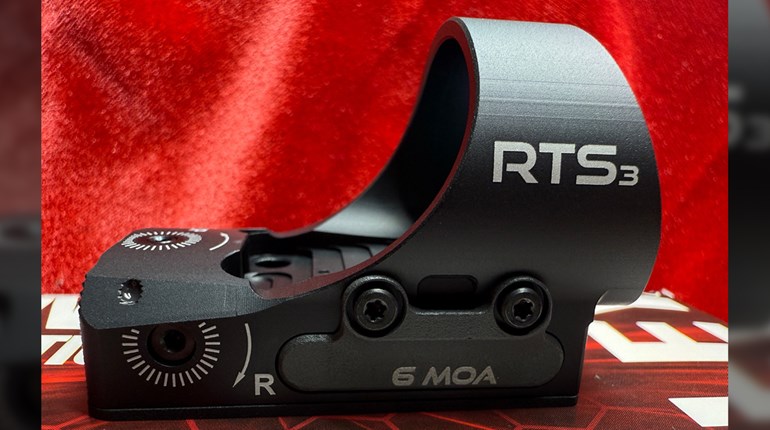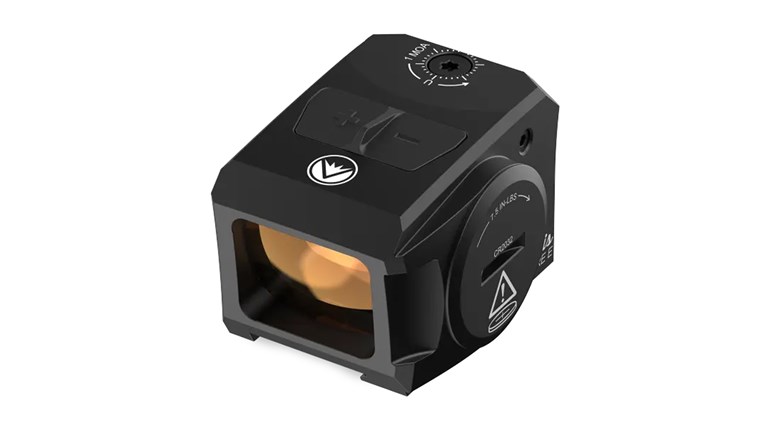
Mounting a red-dot, reflex or holographic sight in front of a fixed-power magnifier that can flip out of the way is one way to deal with targets at varying distances.
Rifle and carbine shooters have a seemingly endless range of sight choices. Current optical offerings allow us to handle targets from an arm’s length away to a thousand yards (or more) downrange. Picking one aiming system for a segment of that total distance is tough enough due to the volume of choices, but things get a lot more complicated when you need to hit things both near and far with the same efficiency. Engaging close or fleeting targets quickly while still maintaining a precision capability at the 500- to 600-yard ranges has long been the goal of 3-gunners, predator hunters and military combatants. Regardless of whether you are in one of those categories—or have a completely different use for a near- to mid-range sighting system—several good options exist for your rifle.
The three most-common ways to satisfy this need via optical sights are to use a reflex/red-dot sight with an additional magnifier, mount a low/variable-power optic or to employ a micro-red-dot optic in conjunction with a high-power, magnified optic. A fourth optical solution is to use a long-eye-relief (LER) scope.
Red Dot & Reflex Sights With a Magnifier
These electro-optics are very popular due to their modest sizes and ease of rapid use. But, the lack of magnification leaves us wondering if the target-obscuring dot/X/circle/blob reticle is centered on our intended point-of-impact or something else within a 5-foot radius of a distant target. Adding a low-power magnifier behind the sight can help us better see those targets for both identification and aiming. Magnifiers are available from at least a dozen manufacturers, ranging from 3X to at least 7X and include at least one 1-5X variable option. Today’s mounts typically allow magnifiers to be quickly flipped to one side or the other so that regular sights can be accessed efficiently. If you are not hung up on a particular brand, you no longer have to dish out as much for the magnifier as you did for the sight. Magnifiers also make your aiming point appear larger—flaws and all—so they may still obscure small targets. But seeing downrange in greater detail allows you to place a portion of the aiming point on target more consistently. Be sure to match up the mount’s height with that of your electro-optic. Adjustments that allow you to co-align the tube to your aiming point are a good feature for which to shop.
Low/Variable Power
There was a time when the best you could do for low-power riflescope adjustability was 1-4X. That level of magnification still works well for a wide range of uses, but if your quarry happens to be small (or you need to see details beyond 200 yards or so), the top end can still leave you wanting. Fortunately, 1-6X and 1-8X optics are widely available and good-quality models can be had at reasonable prices. Several companies are now branching into the 1-10X range, which I have not personally used. EOTech’s Vudu (1-6X), SIG Optics’ Tango 6 (1-6X) and Trijicon’s AccuPower (1-8X) are good-quality scopes, priced far below high-end models like Schmidt & Bender’s PMII Short Dot CC (1-8X) or Leupold’s CQBSS (1-8X). Vortex has popular 1-6X options at both the low and mid points of the cost spectrum. Many other manufacturers have 1-6X or 1-8X scopes and I have used most current models at least once.
In my experience, these riflescopes work well as close-range sights at the 1X setting, though some have more noticeable 1.1X magnification than others on the low end. Illumination styles differ widely, but with practice you can place them all on target quickly. Reticle options include dots, BDCs for various calibers and mil-based combinations of all three. In addition to ease of seeing mid-range targets, these scopes typically have etched reticles, so if your battery dies, you will still have a visible aiming reference at any power. First- and second-focal-plane options exist in several models. Potentially higher cost, additional weight and increased mounting-space needs are drawbacks to this approach.
Micro Red-Dot Optics
Back in my young sniper days, the only option at close range was to piggyback a full-size Aimpoint 5000 on top of a fixed, 10X riflescope using a mount that was fabricated by our armorers. This bulky setup required one to come completely off the buttstock to see through, but it gave us a way to shoot things up close and with relative speed. Today we have a wide array of tiny reflex sights to perform this function more efficiently. They tend to be affordable, small, light and effective against close-range targets. Batteries are required in most cases, with auto shutoff and/or long run times being common today. Mounting options include piggybacking on top of a higher-magnification riflescope or 45-degree offset mounts that allow a quick transition from the big scope. The downsides of using micro-illuminated sights are having an extra protuberance hanging off of your rifle and the need to alter your position in order to see through the close-range optic.
LER Scopes
Long-eye-relief riflescopes have been around for decades, originating in fixed-power form for use on handguns. Later applied to the scout rifle concept, these optics require a forward-mounting surface—usually Picatinny rail—positioned in front of the rifle receiver and over the barrel or on top of the handguard. Unlike conventional scopes, they allow for eye relief starting around 6 inches and going out to around 15 inches, depending on the model. Variable-power LER scopes allow shooters to quickly acquire close targets due to forward positioning and low-power settings. At higher powers these optics help shooters accurately engage targets out to several hundred yards in a low-profile, lightweight and often inexpensive format. Typical zoom ranges fall somewhere between 2X and 8X, depending on brand and model. With a little practice, the 2X setting can be nearly as fast on close targets as a non-magnified dot sight. Fields-of-view tend to be limited at the 7X or 8X settings.
Two other techniques for tackling the near- to mid-range challenge are to use offset iron sights or a visible laser in conjunction with a high-powered scope. Offset irons are much less expensive than an additional electro-optic and add less weight and bulk. Visible lasers are usually small and provide for very rapid target engagement at close targets—if you can see the laser’s “splash” on target. The problem comes when shooting in bright daylight. Even the brightest of small, visible lasers are difficult to see in these conditions, so they are the least-appealing option for me.
Regardless of the method used, allow plenty of training time at varying-distance targets before planning to go live with your setup. Each of the aforementioned sighting systems can work for a wide range of conditions to help you get the most out of your rifle and ammo.


































